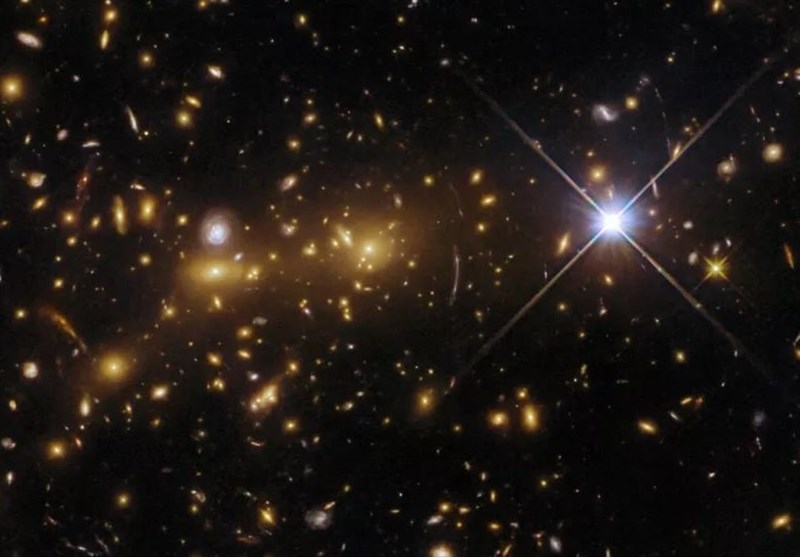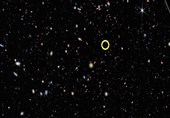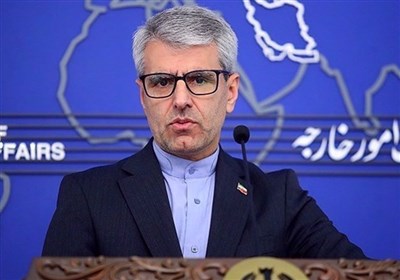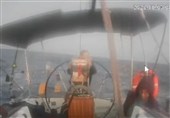Hubble Telescope Reveals Massive Galaxy Cluster 'Cosmic Monster' in Distant Universe
TEHRAN (Tasnim) – The Hubble Space Telescope has unveiled a breathtaking view of a colossal galaxy cluster known as eMACS J1353.7+4329, earning the moniker of a ‘cosmic monster’.
Located approximately eight billion light-years away in the Canes Venatici constellation, this cluster is composed of two elliptical galaxy clusters in the midst of merging, as stated by the European Space Agency, according to Space.com.
In the Hubble image, the galaxy cluster appears as a densely packed congregation of oval shapes, each exhibiting a luminous orange halo surrounding a brilliant core. Scattered throughout the image are numerous other galaxies, alongside a radiant star displaying a starburst effect with four distinct diffraction spikes.
This colossal galaxy cluster serves as a gravitational lens, enabling scientists to scrutinize early galaxies with enhanced precision. Gravitational lensing occurs when massive foreground objects, such as the merging galaxies, warp the fabric of space-time, resulting in the magnification or distortion of light from more distant objects.
"The sheer mass of a celestial body like a galaxy cluster distorts space-time, causing light to follow a visibly bent path around the object, much like a vast lens," explained ESA officials in a statement. "In this image, the first indications of gravitational lensing are already apparent, manifesting as bright arcs that intermingle with the multitude of galaxies in eMACS J1353.7+4329."
Visible to the right of the largest central galaxy in the image, the effects of gravitational lensing are evident as a background galaxy stretched into two connected, slender arcs.
Multiple wavelengths were employed in the recent observations of eMACS J1353.7+4329, utilizing Hubble's Wide Field Camera 3 and Advanced Camera for Surveys. These data were gathered as part of the "Monsters in the Making" project, focusing on five extraordinary galaxy clusters.
ESA's statement highlighted that Hubble's study of these vast gravitational lenses lays the foundation for future investigations of such objects with even greater detail using NASA's James Webb Space Telescope.






